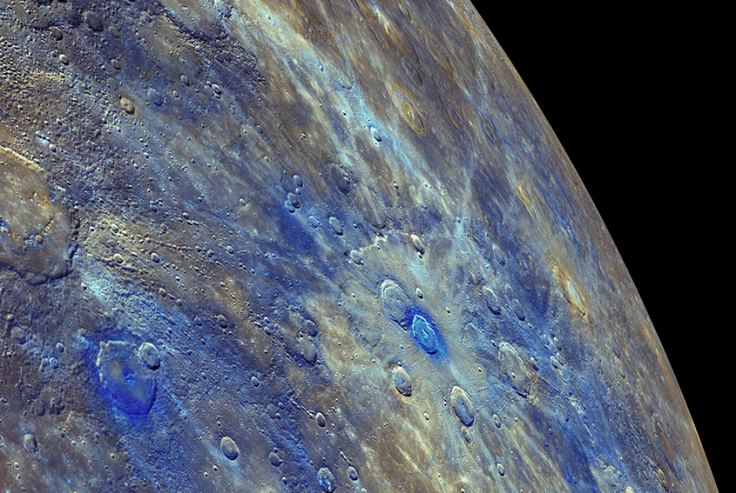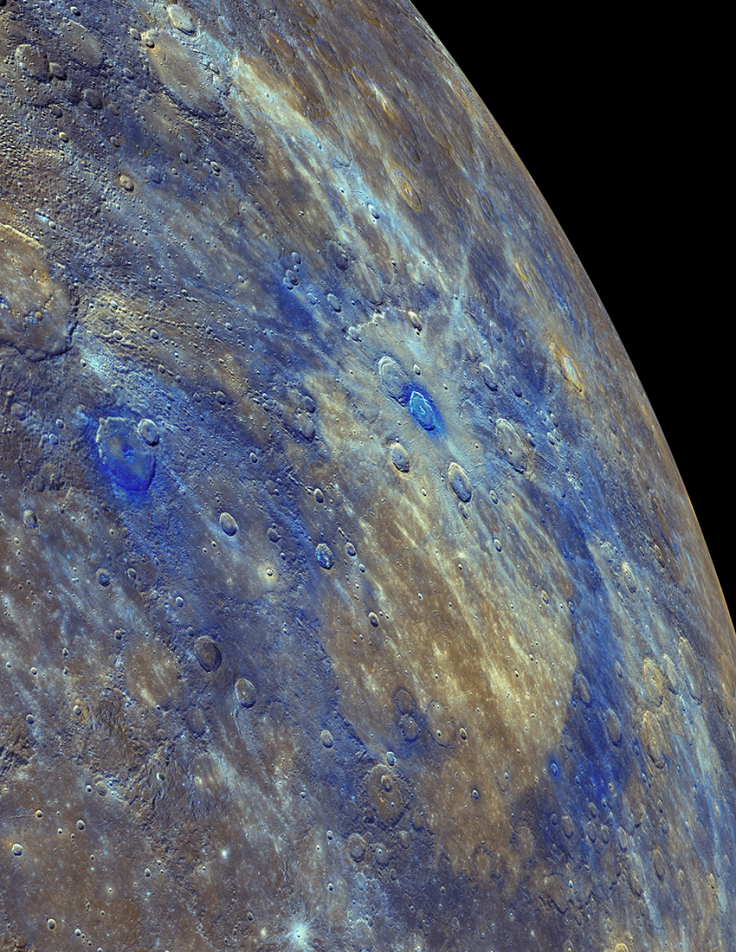Mercury's dark secrets revealed: Planet once had carbon-rich crust

The secret to Mercury's dark appearance has been uncovered, as researchers discover the remains of a carbon-based crust on the planet. Nasa's Messenger spacecraft took measurements and photographs of Mercury's surface to find that the planet once had a graphite-rich crust, which accounts for its dark surface.
Scientists have always been confused as to what causes Mercury's surface to appear so dark. It was believed that an iron-rich surface is the darkening agent on a planets crust. The Moon has much more iron than Mercury, yet Mercury is by far darker. In March 2015, scientists suggested that this darkening was caused by a large comet striking the planet in the early universe, leaving huge deposits of carbon on its surface.
However, research published in Nature Geoscience, has finally got to the bottom of the mystery. Scientists from Johns Hopkins University and Carnegie Institute for Science used Messenger to find their results.
"The previous proposal of comets delivering carbon to Mercury was based on modelling and simulation," said Larry Nittler, co-author of the research. "Although we had prior suggestions that carbon may be the darkening agent, we had no direct evidence. Nittler added: "We used Messenger's Neutron Spectrometer to spatially resolve the distribution of carbon."
The spacecraft collected its data after a number of orbits around Mercury. Each time it got within 60 miles of Mercury's surface, it took more information from the planet.

Using Messenger's data
They discovered carbon's distribution matched the location of the darkest spots across the planet's surface. Furthermore, the scientists used all of the data to decipher how carbon first arrived on the planet.
They found it had been there all along, existing as graphite. Graphite, a crystalline form of carbon, fits the visible wavelength and reflectance spectra of the planet's crust.
Models suggested that a very young Mercury may have had a liquid magma surface. Its proximity to the sun meant that it would have had an 'ocean' of molten magma spanning the entire planet.
As this magma began too cool, all of the planets minerals would have sunk towards the core – except one; graphite.
"The finding of abundant carbon on the surface suggests that we may be seeing remnants of Mercury's original ancient crust mixed into the volcanic rocks and impact ejecta that form the surface we see today," said Nittler. "This result is a testament to the phenomenal success of the Messenger mission."

Messenger crash-landed on Mercury on 30 April 2015. However, even after it crashed, it managed to help scientists uncover information on the planets gravitational pull. They found the magnetic fields in ancient Mercurial rocks had a magnetic field as strong as Earth's billions of years ago.
© Copyright IBTimes 2025. All rights reserved.






















